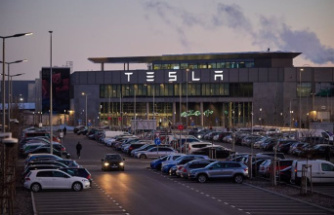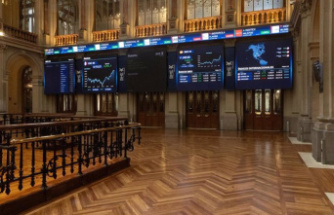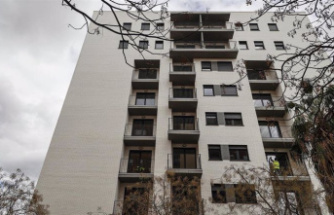In 2017 the Port Authority of New York and New Jersey will begin a seven-year, $1.9 billion restoration of the George Washington Bridge. The project, which includes replacing its suspender cables, will rip out the seven-foot-wide paths for cyclists and pedestrians on the edges of the roadway.
The agency promises to restore the paths with improvements, including ramps instead of stairs, wider approaches and anti-suicide barriers. It will also dedicate one path for cyclists and one for runners and pedestrians. Unfortunately, the agency will not expand the existing paths to accommodate growing demand.
The 1931-era paths have grown dangerously inadequate. They now attract 3,700 cyclists per day on weekends, a number that has been growing at 10.4% per year. If this continues, the paths will need to support 9,000 cyclists per day by 2024. This level of use is wholly unprecedented, particularly for a facility that ignores national standards intended to ensure adequate capacity and user safety.
article continues below advertisementThe George Washington Bridge is the only bike-able connection between North Jersey and New York City. If not upgraded it will become a choke point, stifling the growth of active transportation across the region for decades.
The Port Authority's 10-year capital plan, which its board is expected to approve Thursday, includes $4.2 billion for new rail links to Newark and LaGuardia airports, which would serve 10,000 riders per day. Adding pedestrian and cycling capacity to the George Washington Bridge would support that many travelers for 2% of the cost—an estimated $90 million.
Paths widened to comply with national standards would generate durable enhancements to regional tourism, public health and resilience worth well in excess of the cost of construction. Active transportation added $497 million to New Jersey’s economy in 2011. And Gov. Andrew Cuomo just committed to building a 750-mile Empire State Trail. Together with the new Tappan Zee Bridge paths, that’s over half a billion dollars invested in regional cycling.
With unobstructed views of the Palisades and Manhattan, wide George Washington Bridge paths would become a tourist draw, similar to Walkway over the Hudson, which draws 500,000 visitors per year. The increased physical activity they would spawn would save 20 lives per year, worth $200 million in health savings, according to a model by the World Health Organization. And they would improve resiliency; for example, should the region lose a Hudson rail tunnel before a replacement can be built, wider bridge paths would support tens of thousands of commuters per day, as the East River bridges did after Superstorm Sandy flooded subway tunnels.
The Port Authority's proposal ignores federal guidelines and a broad bi-state coalition. The U.S. Department of Transportation advises transport agencies to spend up to 20% of renovation budgets on biking and walking improvements. That's $380 million in the case of the George Washington Bridge. Yet the Port Authority has allocated less than $20 million for the paths themselves (excluding the barriers to deter suicide attempts) in its restoration budget.
The agency's mission is to facilitate transportation in all forms and to support economic growth in the region. That's why some 150 organizations, businesses and communities have called for wider paths. Port Authority commissioners should vote this week to include widened George Washington Bridge paths in the capital plan.
Neile Weissman is head of Complete George, an ad hoc coalition of 150 organizations, businesses and elected officials. Its website completegeorge.org details the arguments and data used in this essay.
In 2017 the Port Authority of New York and New Jersey will begin a seven-year, $1.9 billion restoration of the George Washington Bridge. The project, which includes replacing its suspender cables, will rip out the seven-foot-wide paths for cyclists and pedestrians on the edges of the roadway.
The agency promises to restore the paths with improvements, including ramps instead of stairs, wider approaches and anti-suicide barriers. It will also dedicate one path for cyclists and one for runners and pedestrians. Unfortunately, the agency will not expand the existing paths to accommodate growing demand.
The 1931-era paths have grown dangerously inadequate. They now attract 3,700 cyclists per day on weekends, a number that has been growing at 10.4% per year. If this continues, the paths will need to support 9,000 cyclists per day by 2024. This level of use is wholly unprecedented, particularly for a facility that ignores national standards intended to ensure adequate capacity and user safety.
The George Washington Bridge is the only bike-able connection between North Jersey and New York City. If not upgraded it will become a choke point, stifling the growth of active transportation across the region for decades.
The Port Authority's 10-year capital plan, which its board is expected to approve Thursday, includes $4.2 billion for new rail links to Newark and LaGuardia airports, which would serve 10,000 riders per day. Adding pedestrian and cycling capacity to the George Washington Bridge would support that many travelers for 2% of the cost—an estimated $90 million.
Paths widened to comply with national standards would generate durable enhancements to regional tourism, public health and resilience worth well in excess of the cost of construction. Active transportation added $497 million to New Jersey’s economy in 2011. And Gov. Andrew Cuomo just committed to building a 750-mile Empire State Trail. Together with the new Tappan Zee Bridge paths, that’s over half a billion dollars invested in regional cycling.
With unobstructed views of the Palisades and Manhattan, wide George Washington Bridge paths would become a tourist draw, similar to Walkway over the Hudson, which draws 500,000 visitors per year. The increased physical activity they would spawn would save 20 lives per year, worth $200 million in health savings, according to a model by the World Health Organization. And they would improve resiliency; for example, should the region lose a Hudson rail tunnel before a replacement can be built, wider bridge paths would support tens of thousands of commuters per day, as the East River bridges did after Superstorm Sandy flooded subway tunnels.
The Port Authority's proposal ignores federal guidelines and a broad bi-state coalition. The U.S. Department of Transportation advises transport agencies to spend up to 20% of renovation budgets on biking and walking improvements. That's $380 million in the case of the George Washington Bridge. Yet the Port Authority has allocated less than $20 million for the paths themselves (excluding the barriers to deter suicide attempts) in its restoration budget.
The agency's mission is to facilitate transportation in all forms and to support economic growth in the region. That's why some 150 organizations, businesses and communities have called for wider paths. Port Authority commissioners should vote this week to include widened George Washington Bridge paths in the capital plan.
Neile Weissman is head of Complete George, an ad hoc coalition of 150 organizations, businesses and elected officials. Its website completegeorge.org details the arguments and data used in this essay.
Sign up for our FREE daily email newsletter. A summary of the day's top business and political headlines from the newsroom of Crain's New York Business.
More Newsletters ›
Our editors found this article on this site using Google and regenerated it for our readers.













